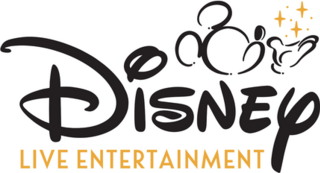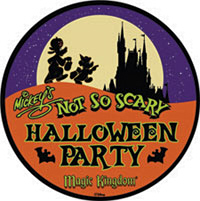
Huey, Dewey, and Louie are triplet cartoon characters created by storyboard artist (screenwriter) Carl Barks for The Walt Disney Company from an idea proposed by cartoonist Al Taliaferro. They are the nephews of Donald Duck and the grand-nephews of Scrooge McDuck. Like their maternal uncles, the brothers are anthropomorphic white ducks with yellow-orange bills and feet. The boys are sometimes distinguished by the color of their shirts and baseball caps. They appeared in many Donald Duck animated shorts, as well as in the television show DuckTales and its reboot, but the comics remain their primary medium.

Pirates of the Caribbean is a dark ride at Disneyland, Walt Disney World's Magic Kingdom, Tokyo Disneyland and Disneyland Park at Disneyland Paris.

The Happiest Homecoming on Earth or the Happiest Celebration on Earth was the eighteen-month-long celebration of the 50th anniversary of the Disneyland theme park, which opened on July 17, 1955. It commemorated fifty years of Disney theme parks and celebrated Disneyland's milestone throughout Disney parks all over the globe. The "Homecoming" name was only used for Disneyland Resort; all the other Disney Parks resorts used the "Celebration" name.

Fantasyland is one of the "themed lands" at all of the Magic Kingdom-style parks run by The Walt Disney Company around the world. It is themed after Disney's animated fairy tale feature films. Each Fantasyland has a castle, as well as several gentle rides themed after those Disney animated feature films.

Wishes: A Magical Gathering of Disney Dreams was a fireworks show at the Magic Kingdom theme park of Walt Disney World. The show debuted at the park on October 9, 2003, and was developed by Walt Disney Creative Entertainment, under the direction of VP Parades & Spectaculars, Steve Davison, who was assigned to create a replacement for the 32-year-old Fantasy in the Sky fireworks. Several variations of the show at Walt Disney World include Happy HalloWishes during "Mickey's Not-So-Scary Halloween Party", Holiday Wishes during "Mickey's Very Merry Christmas Party", and Magic, Music and Mayhem during the 2007 event Disney's Pirate and Princess Party. The multimedia version at Disneyland Park in Disneyland Paris premiered on July 16, 2005, and had its final show on August 25, 2007. The show at the Magic Kingdom was sponsored by Pandora Jewelry. The show was presented for the last time on May 11, 2017, at the Magic Kingdom Park and was replaced by Happily Ever After in the following day.

Virtual Magic Kingdom, also known as VMK, was a massively multiplayer online game developed by Walt Disney Parks and Resorts and Sulake and published by The Walt Disney Company. It was a virtual representation of the Disneyland-style theme parks, containing areas and minigames which were based on real park scenery and attractions. The beta version opened publicly on May 23, 2005, with new lands opening up through 2007.

Disney Live Entertainment is the theatrical live entertainment production division of Walt Disney Imagineering, the design and development arm of Disney Experiences, a division and business segment of The Walt Disney Company.

A Hidden Mickey is a representation of Mickey Mouse that has been inserted subtly into the design of a ride, attraction, or other location in a Disney theme park, Disney properties, animated film, feature-length movie, TV series, or other Disney product. The most common Hidden Mickey is a formation of three circles that may be perceived as the silhouette of the head and ears of Mickey Mouse, often referred to by Disney aficionados as a "Classic Mickey". Mickeys may be painted, made up of objects, or be references such as someone wearing Mickey Mouse Club ears in a painting. Hidden Mickeys can take on many sizes and forms.
Pirates of the Caribbean is a Disney media franchise encompassing numerous theme park rides, a series of films, and spin-off novels, as well as a number of related video games and other media publications. The franchise originated with Walt Disney's theme park ride of the same name, which opened at Disneyland in 1967 and was one of the last Disneyland attractions overseen by Walt Disney. Disney based the ride on pirate legends, folklore and novels, such as those by Italian writer Emilio Salgari.

Mickey's Not-So-Scary Halloween Party (MNSSHP) is a separate-admission Halloween-themed event held annually during the months of August, September, October, and November at the Magic Kingdom theme park of the Walt Disney World Resort in Lake Buena Vista, Florida, near Orlando, and at Disneyland Paris Resort outside Paris, France. The party began as a response to the Halloween Horror Nights event at Universal Studios Florida. Disney's event caters to a traditional family atmosphere, whereas Universal's has more of a "fright-centered" event with their monsters.

Mickey no Tokyo Disneyland Daibōken is a video game for the Super Famicom game console starring Mickey Mouse. It was published by Tomy on December 16, 1994 in Japan. This game has 6 levels.
Mickey's Pirate and Princess Party was a hard-ticketed event held throughout the months of January through June at the Magic Kingdom theme park at the Walt Disney World Resort in Lake Buena Vista, Florida outside Orlando. A smaller version was also planned for Disneyland Paris Resort in 2011, but was cancelled. This event combined two of The Walt Disney Company's franchises, the Disney Princess line and the Pirates of the Caribbean franchise.

Kinect: Disneyland Adventures is a 2011 open world video game developed by Frontier Developments and published by Microsoft Studios on Kinect for Xbox 360, with a remaster for Xbox One and Microsoft Windows developed by Asobo Studio released in 2017 as simply Disneyland Adventures. It takes place in a recreation of Disneyland Park in Anaheim, California, circa 2011, with themed games in place of many of the rides, while motion controls are used to play the game.
Snow White is a Disney media franchise that began in 1937 with the theatrical release of Snow White and the Seven Dwarfs. It is based on the 1812 fairy tale by the Brothers Grimm.
Walt Disney World Inside Out was an American television show that aired on the Disney Channel from 1994 to 1997. Initially airing monthly, it later became a weekly program, and featured footage of attractions at Walt Disney World in Orlando, Florida.












